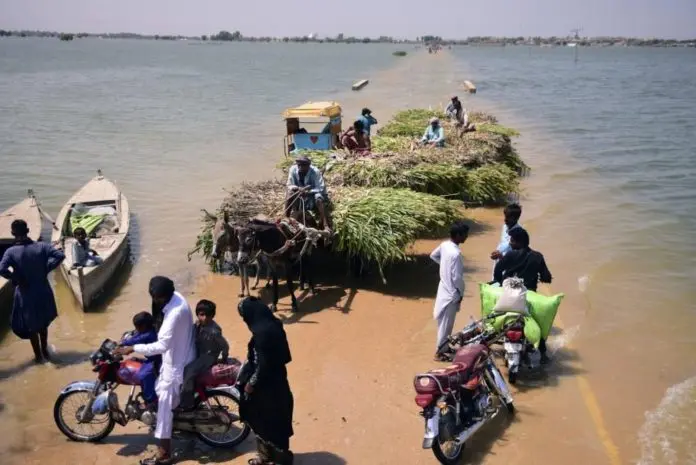- P.O. Box: 11482 Yaoundé, Cameroon; Headquarters: Efoulan, Yaoundé 3
- contact@caessinternational.org

Extreme Weather Conditions in Pakistan Destroy Crops and Threaten the Country’s Food Security
Pakistan’s agriculture is facing a true tragedy. In August 2022, torrential rains hit the plains of the Sindh region, completely destroying crops in the area. It is estimated that about 600,000 hectares of cotton crops were devastated, with large plots submerged under water. The extent of the damage is such that fields can now only be accessed by boat.
As the world’s fifth-largest cotton producer, Pakistan is suffering a major loss in its textile industry, which accounts for nearly 10% of the country’s GDP. The destruction of cotton fields by flooding delivers a severe blow to the country’s economic recovery, which is already in crisis. Agriculture represents nearly 5% of Pakistan’s economy and is practiced by over 40% of the population. Consequently, the authorities in Islamabad are compelled to turn to importing cotton and food supplies to mitigate the disaster’s impact on food security. Even rice paddies were not spared by the floods. Under these conditions, drainage of water from cities and plantations will take between three and six months, jeopardizing wheat sowing.
Moreover, the responsibility for this disaster partly lies with the world’s largest polluters who continue to invest heavily in fossil fuels. Emitting less than 1% of global greenhouse gases, Pakistan is among the countries most vulnerable to climate change. Following the floods, the assessment by the United Nations Food and Agriculture Organization (FAO) is even more telling:
1.2 million hectares damaged, only in Sindh;
More than 700,000 livestock perished across the country.
Worse still, surviving livestock are exposed to epidemics, likely causing a sharp decline in milk production and yield.
All in all, this catastrophe highlights the risk of food insecurity for Pakistan and its over 200 million inhabitants. The country is seeing rising prices for essential food items such as tomatoes and onions, critical for local cuisine. This has led to inflation reaching 29.5% compared to the same period in 2021. In response, authorities have initiated imports of food supplies from Iran and Afghanistan, with possible future imports from India.
To conclude, as the world’s fourth-largest rice exporter—with main clients including China and sub-Saharan Africa—Pakistan’s food crisis could further aggravate global food insecurity.